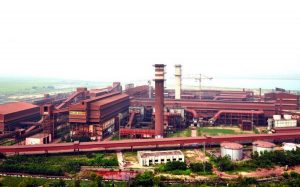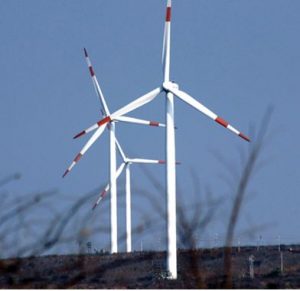 By Dr. P. K. Jena* in Bhubaneswar, July 22, 2022: The world consumes huge amounts of fossil fuels particularly coal and oil as sources of energy for expanding industry and transport sectors. It is apprehended that fossil fuels being non renewable in nature are going to be exhausted in near future. In view of this, the biomass is considered as a major alternative clean energy source.
By Dr. P. K. Jena* in Bhubaneswar, July 22, 2022: The world consumes huge amounts of fossil fuels particularly coal and oil as sources of energy for expanding industry and transport sectors. It is apprehended that fossil fuels being non renewable in nature are going to be exhausted in near future. In view of this, the biomass is considered as a major alternative clean energy source.
As it is a renewable one, efforts are being made in recent decades to utilize the energy obtained from biomass for these two sectors. Since very beginning, human beings have been using biomass for harnessing energy for cooking food and other domestic purposes.
However, the availability of right type of biomass and its use in industry and transport sectors strongly depend on regional conditions including availability, cost, nature of biomass etc. At present, biomass provides about 8% of total energy requirement of industries in the world. In some regions of the world like Latin America and Africa, biomass contributes nearly 30% of energy requirement of industries.
The coke produced from metallurgical coal is predominantly used for iron and steel making but, historically iron was produced using charcoal exclusively as fuel and reluctant. Even now, in countries like Brazil, significant amounts of pig iron are being produced using charcoal. In transport sector, the fossil fuel can also be replaced by bio- fuels in an efficient manner hopefully by the year 2050. The cement, iron and steel sectors in Brazil use biomass of about 34% and 40% respectively of the total fuel consumed.
Some of the applications of bio-energy in industrial sector are summarized below:
(a) Liquid bio fuels include ethanol produced from fermentation of sugar and biodiesel through transesterification of vegetable oils. It is reported that, 57 kiloton’s (Kt) of production capacity is in operation, and about ten plants each with a capacity of between 50,000 tons and 300,000 tons are coming up very shortly in different parts of world.
 (b) In some countries significant quantities of biomass are already being fired with coal in conventional coal-based power plants. For example, the Amer 9 CHP power plant in the Netherlands, which produces 600MW of electricity and 350 MW equivalent of heat, currently co-fires 35% of biomass mostly in form of wood pellets with 65% coal.
(b) In some countries significant quantities of biomass are already being fired with coal in conventional coal-based power plants. For example, the Amer 9 CHP power plant in the Netherlands, which produces 600MW of electricity and 350 MW equivalent of heat, currently co-fires 35% of biomass mostly in form of wood pellets with 65% coal.
(c) The two forms of gaseous bio fuels namely biogas produced from anaerobic digestion of organic matters and producer gas or synthetic gas (SYN) from biomass gasification are finding commercial application in recent years. The biogas produced from anaerobic digestion of organic matters after purification (after removal of carbon dioxide) can have similar composition to natural gas. The biogas after cleaning can be fed directly to the natural gas distribution pipe line or can be used for gas turbine.
Biomass gasification, though still in an early commercial stage, offers good prospects for its use for process heat and power generation. Gasifiers produce a synthetic gas (syngas) that can be adjusted for direct use in combined cycle gas turbine plant for power generation, or fed into existing distribution networks, or can be used for production of liquid fuels through the Fischer-Tropsch process. However, most of these are currently on pilot scale stage.
(d) Biomass and other organic wastes can be used as a fuel in cement industry. The use of alternative fuels in cement industry is a long established practice in many countries. It offers the opportunity to reduce production cost, dispose of organic wastes, and thus reducing carbon dioxide emission by decreasing use of fossil fuel.
Cement kilns are well-suited for waste combustion because of their high process temperature and the clinker products with limestone feedstock act as gas-cleaning agent. In recent years, used tyres, wood, plastics, chemicals, organic municipal solid wastes and other types of such wastes are being co-combusted in cement kilns in large quantities.
Thus, fossil fuels are replaced with alternative biomass fuels that would otherwise have been incinerated or land filled and thus contributing to lower the overall carbon dioxide emission. In a survey conducted by the World Business Council on Sustainable Development in 2006, it was reported that, 10% was average use of alternative fuels, of which about one third was biomass.
European cement manufacturers derived 3% of their energy needs from waste fuels in 1990 and 17% in 2005. Cement producers in some of the European countries like Belgium, France, and Germany have been able to use biomass ranging from 35-80% of the total energy required. The share of alternate fuel use in clinker production in cement kiln in countries like Netherland, Swizerland, Australia, Germany and Norway are 84%, 49%, 48%, 36% and 28% respectively. It may be mentioned here that, there is a great scope to use urban and industrial organic wastes in cement industries particularly in developing countries.
By the year 2050, it is expected that, the developed countries should be able to use 40-60% and developing countries 25-30% alternate fuel in cement industries.
Biomass available in different form can be utilized to produce electricity, heat and transport fuels. By extensive use of biomass, it is possible to reduce green house gas emission considerably. By using biomass for producing energy with best available technology, the carbon dioxide emission can be reduced to 55-98% compared to fossil fuels even when transported over long distance, but the availability of biomass for meeting the increasing demand of energy and transport fuel, is limited. However, large scale use of biomass may cause deforestation and environmental problems. Reduced bio-diversity is a major risk to our environment having adverse effects on air quality, soil properties and bio-diversity.
However, afforestation of barren land and plantation of fast growing species should be carried out extensively and in addition to this there is a great scope for applying better technology for power and heat generation from biomass. The domestic organic wastes and agricultural wastes if collected and utilized properly through incineration or anaerobic digestion, can produce substantial amounts of energy and heat.
At present, in Denmark, agricultural residues are collected fo r producing bio energy in a big way. In the European Union (EU), considerable efforts are being made to produce heat and power from biomass. It is reported that, serious efforts are being made in recent years to produce more bio energy and heat so that, the amount of bio-energy produced in EU can be increased to 850 TWH by the year 2020.
r producing bio energy in a big way. In the European Union (EU), considerable efforts are being made to produce heat and power from biomass. It is reported that, serious efforts are being made in recent years to produce more bio energy and heat so that, the amount of bio-energy produced in EU can be increased to 850 TWH by the year 2020.
In the present world, most of the energy required in domestic, industrial, transport and similar other sectors are largely derived from fossil fuels releasing millions of tons of green house gases and particulate matters to the environment causing global warming and climate change.
In view of this, efforts should be made in a big way in different countries of the world to produce and utilize increasing quantities of biomass for generating electrical and heat energies so that, the green house gases can be reduced substantially. The electricity and heat energy can be generated through combustion of biomass or production of biogas in systems ranging from small scale domestic stoves to industrial power or heating plants.
The biomass including organic wastes can also be utilized more effectively along with coal in thermal power plants. This can be achieved even in the existing coal fired thermal power plants. This is known as ‘Co-firing’ and it is claimed to be a cost effective option. During coming years serious efforts should also be made to produce fuel from biomass for transport sector to minimize the use of fossil fuels.
* (Former Director General, Council of Scientific & Industrial Research, India)


Leave a Reply
Be the First to Comment!